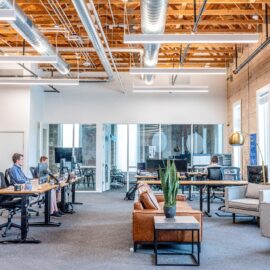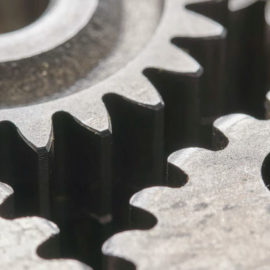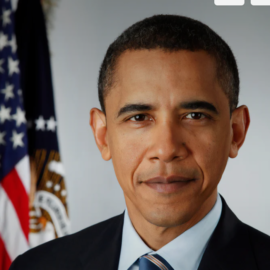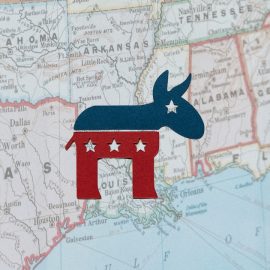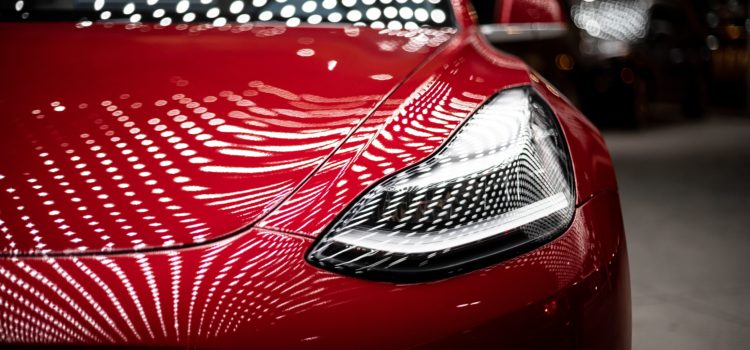
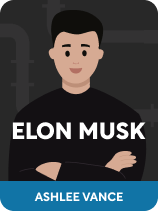
This article is an excerpt from the Shortform book guide to "Elon Musk" by Ashlee Vance. Shortform has the world's best summaries and analyses of books you should be reading.
Like this article? Sign up for a free trial here .
What is the Tesla company history? What did the beginning of Tesla look like? What almost brought Tesla to bankruptcy?
Tesla was born out of a shared vision for the future and a big investment from Elon Musk. After the first model was built, manufacturing and financing issues quickly followed. In the end, it was a deal from the Department of Energy that saved Tesla and put it on the road to success.
Keep reading to learn more about Tesla’s company history.
How Tesla Began
Tesla’s company history began with an investment from Elon Musk. Around the time he started SpaceX, Musk met with an engineer working on battery technology and two engineers who had incorporated Tesla and were working on electric car technology. He suggested that these engineers all work together, and he invested in their venture. They all shared the vision of creating a great car and ending America’s reliance on gasoline. They also decided to build a luxury electric car, rather than a more affordable one that appealed only to environmentalists.
(Shortform note: Tesla had one hallmark of most great teams: a shared vision, or what Simon Sinek calls a Just Cause. A Just Cause is a big-picture vision that provides a framework for your corporate strategies—like Tesla’s vision of creating a car that would help end America’s reliance on gasoline, thus moving people toward a more sustainable future.)
Building the First Model
The initial part of the Tesla company history was building the first model car. To build the initial car, the Tesla team used a luxury English car as the base. They replaced the engine with the battery pack, and within six months, they had a drivable electric car. In January 2005, Musk drove the car, was pleased by their progress, and kept investing.
But the engineers faced problems with this model—called the Roadster—such as flammable batteries and transmission issues. The design elements Musk wanted also delayed production. While they worked to address these issues, the first model took much longer to reach consumers than initially expected.
(Shortform note: In a 2016 interview, Musk admitted that the original plan for the Roadster wasn’t a good one and that he only gave Tesla a 10% chance of survival, perhaps in part due to the manufacturing issues and delays. In 2011, Tesla announced it would discontinue production of the Roadster. But in 2017, Tesla revealed plans for a second generation Roadster—for $250,000—that was set to debut in 2020, but it was pushed back to 2021 and again to 2022. Tesla noted that the new Roadster will have a range of up to 620 miles, a top speed of 250 mph, and a battery pack twice the size of its others. Some experts believe Tesla may delay the Roadster again to focus on production of its other models.)
Manufacturing and Management Issues
Next in the Tesla company history came manufacturing and management issues. While Tesla thought they’d cut costs by manufacturing cheaply overseas, they were actually losing time and money because of manufacturing delays. When Musk heard about the problems, he sent an operations expert to investigate the issues.
Around the middle of 2007, the expert returned with his report on Tesla’s spending and production process. Musk realized the severity of the situation. Tesla reported that each car would cost about $68,000 to make. But the actual production cost was about $200,000. He believed this was a management issue and urged the board to find a new CEO for Tesla, which they did.
Under its new leadership, Tesla addressed many of the manufacturing issues it had, such as the car’s transmission problems, which needed a complete overhaul. Vance explains that Musk began to take a more active role in Tesla’s operations. He also began making more public statements, trying to ease buyers’ minds about the production delays and changes in management.
Financial Problems
2008 was a dark time in the Tesla company history. In October 2008, Musk became CEO of Tesla. By this point, Tesla struggled to stay in business. The company was running out of money: The first model cost $140 million to develop when it was originally estimated to cost $25 million. Vance explains that the company also faced a few other obstacles:
1) Consumers didn’t believe in the future of electric cars yet. (Shortform note: Over 10 years later, consumers still express concerns about electric vehicles, citing their mileage range, high initial cost, battery flammability, performance, and lack of charging infrastructure. These will be challenges the electric car industry will need to overcome to succeed.)
2) Short sellers altered the price of Tesla’s stock, causing the value to fluctuate. (Shortform note: Despite Tesla’s success, as of 2021, it was the most shorted stock in the market and has been for several years.)
3) Due to the 2008 recession, many consumers weren’t buying cars. (Shortform note: In 2008, consumers bought 3 million fewer cars than the previous year.)
Tesla was spending $4 million a month and needed more funding to survive. Musk began asking friends, family, and investors for money, and Tesla employees invested what little money they had. Many people never expected to see this money again.
In December 2008, Musk took out a loan from SpaceX—which had just received their contract from NASA—and asked Tesla investors for more money. Vance explains that Tesla was hours away from bankruptcy when the deal went through, saving the company.
(Shortform note: While Musk eventually solved his money problem with the loan from SpaceX and some outside investments, financing is a common problem for start-ups, and many of the 90% of failed start-ups cite cash-flow problems as a reason for going out of business. Experts advise that to prevent funding issues, have a clear plan for what you’ll do with your existing money and be creative about finding money, like Musk.)
Road to Success
The Tesla company history turned bright soon after. By 2010, Tesla’s fortunes turned a corner. The US Department of Energy (DOE) struck a deal with the company, loaning them $465 million. Tesla used some of this money to buy a factory to manufacture their cars, hoping to send out Model S cars to consumers. A few months later, Tesla went public, raising $226 million.
Then, after Tesla started shipping out the Model S in 2012, the public perception of electric vehicles gradually started to shift, warming to the idea of electric cars. Tesla had addressed manufacturing issues and common complaints about the car. Additionally, Vance explains that Tesla’s salespeople sold enough cars in the span of a few weeks to make a large profit, ending their first quarter as a public company with $562 million in sales. Tesla’s stock prices rose, and they paid off their loan to the DOE early.
By 2013, Tesla’s Model S received the highest Consumer Reports car rating in history—a 99 out of 100—and won awards in the car industry, baffling competitors and naysayers. The Tesla company history is still being developed today as Tesla continues to grow.

———End of Preview———
Like what you just read? Read the rest of the world's best book summary and analysis of Ashlee Vance's "Elon Musk" at Shortform .
Here's what you'll find in our full Elon Musk summary :
- A look into Elon Musk’s childhood and early companies
- Musk's roles in SpaceX and Tesla, and later, in SolarCity
- The traits and management methods that helped Musk succeed

